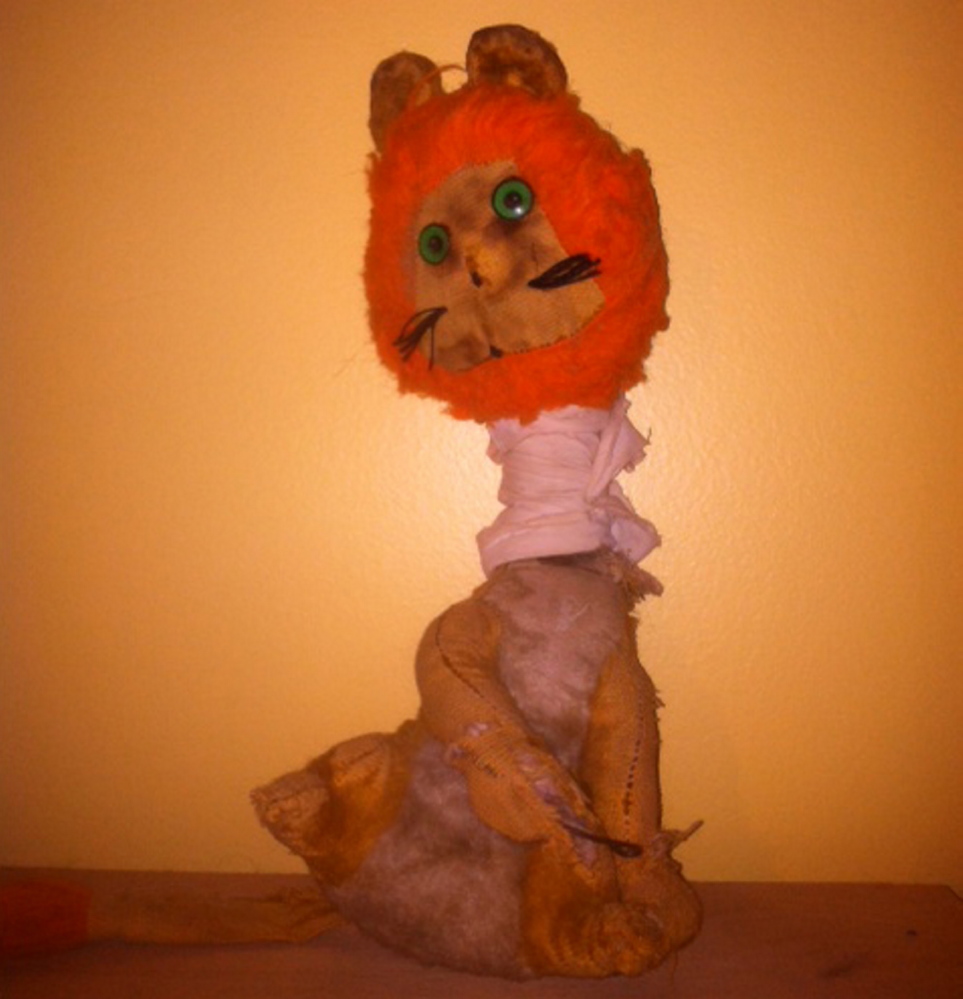Spoiler alert: If you believe in Santa Claus, you probably shouldn’t read this.
A couple years ago, near the end of a particularly long day, I did something that would have set off alarms for even a rookie editor: I changed a reference to Santa Claus in a photo caption to “a man dressed as Santa Claus.”
You would have thought I’d killed the guy.
The prevailing concern — and by concern I mean hysterical, all-caps emails — was from parents who were concerned the child would read that, learn the truth about Santa, and his or her life would be shattered.
My initial reaction was gratification and huge relief. If kids are reading newspapers, we’re doing OK after all.
My second reaction was gee, if they’re old enough to read and understand that photo caption, what are they doing believing in Santa Claus?
Santa and I have a rocky history, based mostly on the fact I never bought the story. And by never, I mean never.
One of my earliest memories is the Christmas I was 3, getting a stuffed lion that I was pretty excited about and showing it to my mother, who was in a three-kids-already-and-pregnant-with-twins zombie state. Her indifference was my epiphany. My thought was, translated here to adult-speak, “Of course she’s not excited. She’s the one who bought it.”
I realized I’d known all along that no fat man came down our skinny chimney. I am not making this up. Ask my mom.
When a neighbor girl, Carol Couse, told my sister Liz and I two years later that there was no Santa, I felt vindicated. We ran home to run it by Mom, who confirmed the information. It was just a formality.
Even as a young kid, I couldn’t make the pieces fit. How does he get to every house in the world? What does he do when there’s not a chimney? How can he fit enough presents for all those kids on his sleigh? How would elves make a Barbie doll? On top of it, why do we need toy drives for poor kids? Won’t Santa bring them presents? None of it made sense.
I never got adequate answers. Mom and Dad weren’t rabid Santa-pushers, but on the other hand, they weren’t radicals. They were nice suburban middle-class Catholics. They went with the flow.
The other Christmas story — the big one — also caused me problems. The questions I asked in my Catholic grade school are the kind that got me rapped with a ruler or sent to the principal’s office.
When I grew up to be a journalist (what else, after all that?) I was thrilled that our bible, the AP Stylebook, said “We don’t use pseudonyms, composite characters or fictional names.” As far as I was concerned, that included men dressed as Santa Claus.
But before you start to think that this is a column trashing Santa, it’s not. It’s the opposite. Stick with me for about 400 more words and we’ll get there.
The black and white of how we report news and how stories come together has always appealed to me. There are a lot of questions in the world, many sides to every story, many angles to pursue. But when you sit down to write, there are rules about how you do it.
One of the biggest is you don’t make stuff up. And you don’t treat fake stuff like it’s real. Those are pretty easy to follow, because reality is infinitely more interesting and layered.
So the yearly pretending Santa is a real person (as well as Mrs. Claus, Rudolph and all his hangers-on) has always nipped at me.
But I get it, too. It’s about fun and fantasy, for grownups as well as kids.
It’s fashionable these days to say there’s a “war on Christmas.”
Despite my antipathy about reporting about Santa like he’s real, I also don’t believe there’s a war on Christmas.
Usually this time of year there are stories about some town somewhere that won’t allow a crèche on the town square, or some city councilor refusing to say Christmas. Or insisting on saying Christmas.
People get bent out of shape when someone says “happy holidays” instead of “Merry Christmas.”
Those issues have always puzzled me as much as the Santa hype. We all know better than to think everyone celebrates Christmas or shares the same beliefs. And we also are proud of our Constitution, which makes it clear that religious belief is up to the individual, so the government shouldn’t be pushing it on people.
If the crèche can’t be on the town common, the one at the church is just fine. If the clerk says “happy holidays,” how does that possibly have any impact on my Christmas?
Why should any of us care what anyone else feels or says about Christmas, or how they celebrate it, or don’t?
I may gripe about our coverage of “Santa” and all things associated, but I go along for the ride because it’s not about how I feel about it and even I am not such a hard-core journalist that I miss the point of the season. As Charles Dickens wrote, “It is good to be children sometimes, and never better than at Christmas.”
Believing in Santa is a lot of fun for kids. My guess is most of them know the truth, but they like the story too much not to play along. Adults enjoy the game, too.
Before Santa, there was that other guy. The one Christmas is all about. Those who believe in him, or even those who just think there’s a lot of good sense in his story, know he’d be the first one to tell everyone to lighten up and find a little tolerance in their hearts.
In Dickens’ “A Christmas Carol” (the second best Christmas story after the original, and not one mention of Santa, mind you), cheerful nephew Fred tells a bah-humbugging Ebenezer Scrooge that Christmas is “a good time; a kind, forgiving, charitable, pleasant time; the only time I know of, in the long calendar of the year, when men and women seem by one consent to open their shut-up hearts freely, and to think of people below them as if they really were fellow-passengers to the grave, and not another race of creatures bound on other journeys.”
Isn’t that the point? Everyone gets to make Christmas — or Festivus, or the holidays, or however they choose to view it — what they want, but with an eye on the bigger picture.
In the end, the bigger picture is what it’s about, not Santa or even religion or belief.
And that’s from one cranky newspaper editor who is not ashamed to admit that upstairs in a place of honor in her bedroom, just as he’s been for 50 years now, is a very ratty stuffed lion.
It never mattered for one minute that he didn’t come from Santa.
Maureen Milliken is the news editor of the Kennebec Journal and Morning Sentinel. Email her at mmilliken@centralmaine.com. Twitter: @mmilliken47. Kennebec Tales is published the first and third Thursday of the month.
Copy the Story LinkSend questions/comments to the editors.




Success. Please wait for the page to reload. If the page does not reload within 5 seconds, please refresh the page.
Enter your email and password to access comments.
Hi, to comment on stories you must . This profile is in addition to your subscription and website login.
Already have a commenting profile? .
Invalid username/password.
Please check your email to confirm and complete your registration.
Only subscribers are eligible to post comments. Please subscribe or login first for digital access. Here’s why.
Use the form below to reset your password. When you've submitted your account email, we will send an email with a reset code.